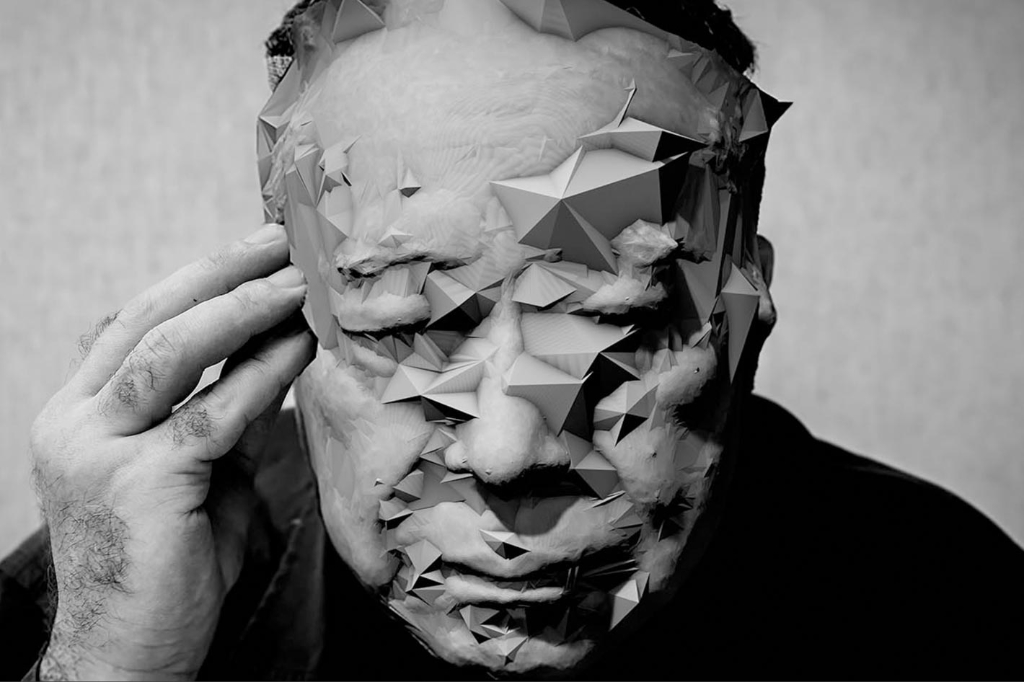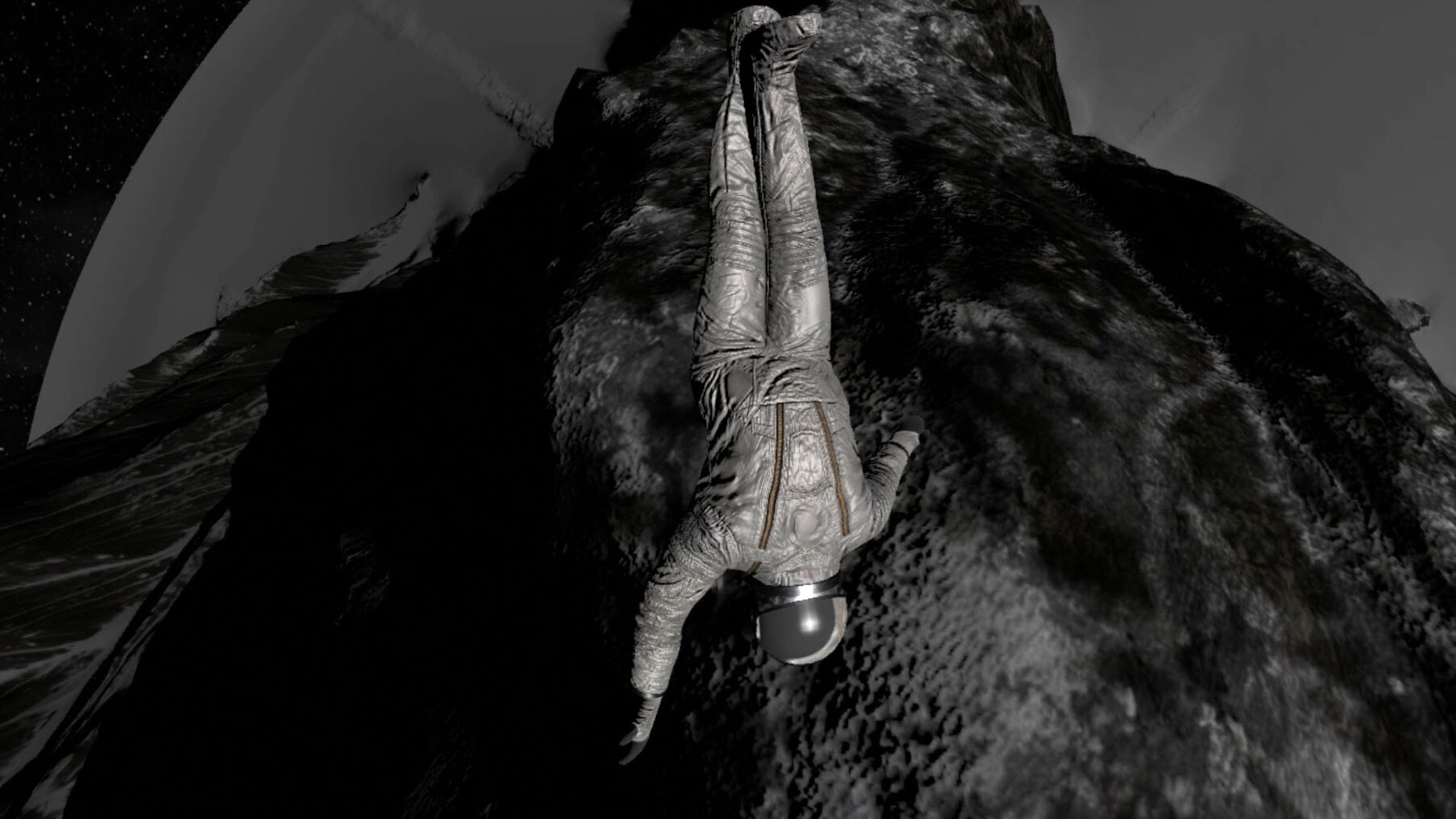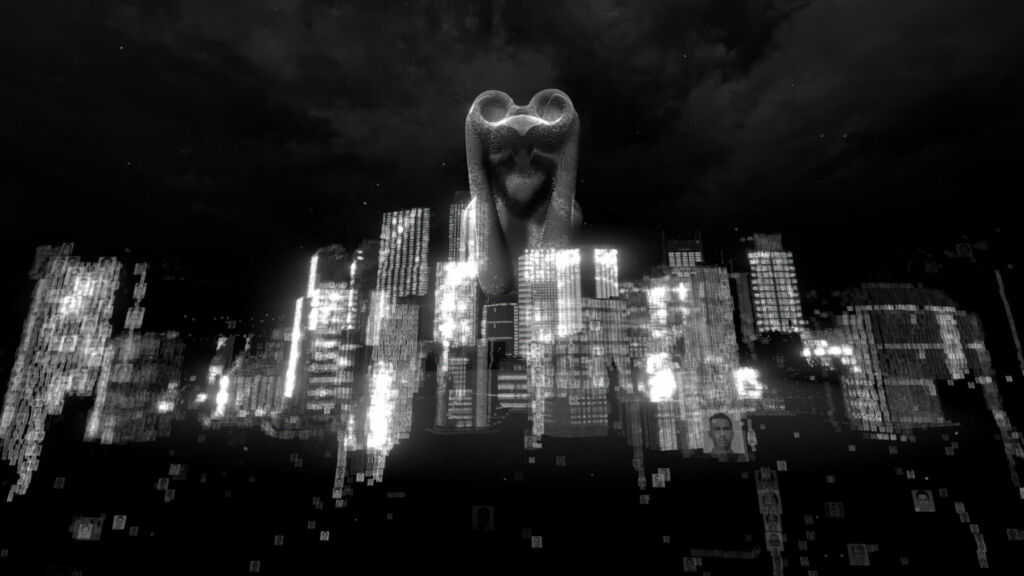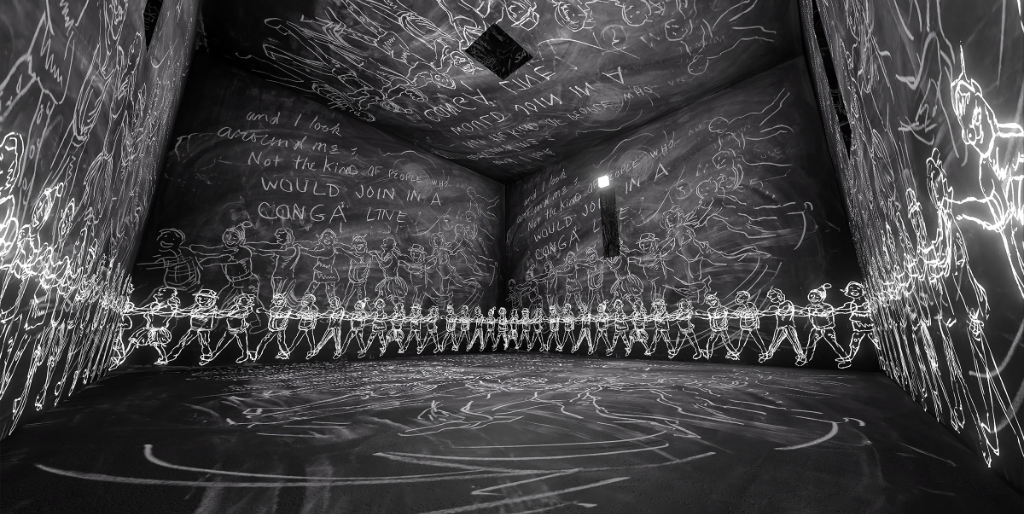Interview by Irem Erkin

Taiwanese artist Hsin-Chien Huang, a visionary in interactive media and virtual reality, views storytelling as a powerful tool for reimagining life. His artistic practice has evolved from traditional storytelling to what he describes as “story-living,” where narratives are not merely told but fully experienced through immersive and interactive means. In his works, interaction becomes essential as the viewer’s thoughts, memories, and behaviours are absorbed into the narrative. Virtual reality offers new possibilities where the viewer’s body plays a vital role in shaping the story. Much like meditation, this process invites the audience to step into the creator’s world, engaging with their own memories and physical presence.
Hsin-Chien Huang envisions his stories as wanderers, migrating and journeying within the hearts of those who experience them. Known for his award-winning and highly experimental virtual reality works, Hsin-Chien Huang has become a regular contributor to festival L.E.V.’s VR program. His imaginative and aesthetic pieces, such as Bodyless, To The Moon and La Camara Insabbiata, have been featured multiple times since 2019.
This time, Hsin-Chien Huang joins forces with renowned electronic musician and composer Jean-Michel Jarre to present The Eye and I, a collaborative virtual reality experience that critically examines their fascination with social surveillance and its impact throughout history. The project invites viewers on a journey through the evolution of surveillance, from religious oversight to the pervasive digital control of today. Set in a prison’s panopticon, twelve cells allow visitors to explore how surveillance has influenced art, family, politics, social structure, and technology. Jarre’s distinctive musical composition amplifies the immersive nature of the experience, creating a thought-provoking work that engages both the mind and the senses.



Your works are heavily influenced by Taiwanese history and culture. How does surveillance in Taiwan, both historically and today, differ from or resonate with the European experience?
Taiwan has unique surveillance history shaped by martial law, and authoritarian rule sets it apart from the European experience. While European surveillance has been closely tied to colonialism, totalitarian regimes, and concerns over privacy within democratic systems, Taiwan’s surveillance resonates more with themes of memory, trauma, and social control. These dynamics are further complicated by Taiwan’s tense and complex relationship with mainland China. With the rise of digital networks and advanced technology, the impact of surveillance in Taiwan is magnified, making it quite different from Europe’s more structured, legally protected surveillance systems.
In your artworks, you explore deeply personal narratives, such as individual stories in Samsara, childhood memories in The Bodyless, and themes of the afterlife in La Cámara Insabbiata. Do you believe that these intimate and spiritual stories create a spiritual connection with participants through a technologically advanced medium?
Yes, deeply personal and spiritual stories can create a profound connection with participants, even through advanced immersive technology. Works like Samsara and The Bodyless use personal narratives and spiritual exploration, paired with digital tools, to evoke a shared human experience. I believe that with the artist’s skill and creativity, standard technology can be transformed into a more intimate narrative medium, allowing the artist to explore deeper, more personal ways of conveying emotion and experience.
Do you aspire to awaken a sense of spirituality within this contemporary digital tool?
That’s exactly my vision—to awaken a sense of spirituality and self-reflection within this contemporary digital framework. In a world where digital networks and media have become the primary means of storing and transmitting memories, I aim to blend art, technology, and storytelling in a way that encourages participants to reflect on their own philosophical and spiritual connections.
I would like to know more about the creative process behind your immersive VR artwork. How do they facilitate transcendent bodily experiences that allow for the embodiment of other lives or the transformation of one’s identity into that of another?
My immersive VR artwork emerges from a creative process that combines both rationality and emotion, blending artistic imagination with interactive technology and embodied cognition from psychology. VR is not just experienced through the eyes and ears but through the body itself. In my work, the design of the environment, interactions, and physical sensations guide participants into feeling and imagining what it’s like to inhabit different bodies. This allows for a transformation of identity and opens a journey toward experiencing life from the perspective of another.
Do you engage in preliminary discussions regarding narrative connections or personal experiences in your collaborations with artists such as Laurie Anderson? How do these collaborative processes influence the outcomes of your projects?
Yes, discussions about narrative connections and personal experiences are essential in my collaborations with other artists. When working with someone like Laurie Anderson, we often delve deeply into philosophical and personal themes. However, we make sure to anchor these discussions with small stories or concrete examples to keep them grounded. To avoid staying too abstract, I usually transform these ideas into quick prototypes to test our understanding and see how they work in practice. Since interactivity is so crucial in VR, participant behaviour becomes a key element in conveying meaning. At this stage, I find that prototypes are the only effective tool for developing these interactive experiences.
You presented The Eye and I during this year’s edition of L.E.V. Matadero Madrid. The project, a collaboration with Jean-Michel Jarre, merges virtual reality, surveillance and music. How did the idea for this partnership come about, and what drew you both to combine the concepts of surveillance and virtual reality?
‘The Eye and I’, my collaboration with Jean-Michel Jarre, emerged from our shared fascination with the intersection of surveillance, virtual reality, and sound. Jean-Michel’s interest in surveillance was sparked after a conversation with Edward Snowden, while I, living in Taiwan—a place rife with electronic surveillance and disinformation—had been grappling with the same issues. But what truly cemented our collaboration was something Jean-Michel said: “Surveillance is important not just because governments and corporations are doing it to us, but because we are also doing it to each other.
This resonated with me on a personal level. In raising my children, I often rely on surveillance as a tool, and my family uses cameras to protect my mother, who has dementia. Surveillance has become something we all use, and VR, as one of the most immersive digital media, offers unparalleled levels of surveillance—eye tracking, what content you’re viewing, your body movements—all meticulously recorded.
For example, the Apple Vision Pro features twelve cameras that monitor user actions, facial expressions, and even the environment. We felt that VR was the perfect medium to explore the origins and effects of surveillance, as it encapsulates the very essence of being watched and tracked.
Could you explain the visual parameters you employed in “Eye&I” to create an intense experience that provokes feelings of observation and entrapment within a “cell of eyes”?
In ‘Eye & I’, I created a claustrophobic environment with walls covered in mirrors and disembodied eyes that follow the participant’s every move, evoking the constant presence of surveillance. Harsh lighting and sharp shadows heighten the tension, while the cell’s inescapable structure amplifies the feeling of entrapment. The design blurs the line between being the observer and the observed, forcing participants to confront their role in the surveillance system.
The prison panopticon, which you use as a metaphor for the installation, has deep ties to the theory of control and observation. How do you think this architectural concept aligns with today’s digital surveillance?
As Michel Foucault described in Discipline and Punish: The Birth of the Prison, society functions like an invisible Panopticon, where we are trained to surveil each other and regulate our behaviour to align with societal expectations. The expansion of social media and digital networks has significantly amplified this system of control.
In the past, we might have felt oppressed by such systems, but today’s younger generation often willingly and even joyfully accepts the constraints and guidance of social networks. I believe that digital networks, social media, AI, and mobile devices have become the modern Panopticon—something we carry with us at all times, unable to detach from. The Panopticon metaphor fits perfectly with today’s digital surveillance, as these tools watch and track our every move, not by force but through our participation and consent.
Your work has transitioned from storytelling to “story-living.” How does The Eye and I embody this transition, where the viewer becomes not just an observer but an active participant in the narrative of surveillance?
The narrative of ‘The Eye and I’ takes participants through a series of prison cells, each representing different facets of surveillance. Graffiti on the walls hints at clues left behind by fellow prisoners, guiding participants as they navigate through these spaces. This transforms the viewer from a passive observer into an active participant in the surveillance narrative, as they move from cell to cell, searching for an elusive way to escape the prison.
We’ve incorporated playful mechanisms where participants’ movements are recorded, leading to the surprising realisation that their own VR headset is watching them. This element adds a layer of humor while also provoking deeper thought about the nature of surveillance. Through these interactive experiences, I aim to turn the traditional passive storytelling model into “story-living,” where participants are not just observing but fully immersed in and living the narrative.
What is your chief enemy of creativity?
I believe the inability to feel is the greatest enemy of creativity. If you can’t experience the world directly through your own body and senses, then true creation becomes impossible. Feeling, both emotionally and physically, is the foundation of artistic expression.
You couldn’t live without…
I couldn’t live without the ability to create—creating has become my way of life.






